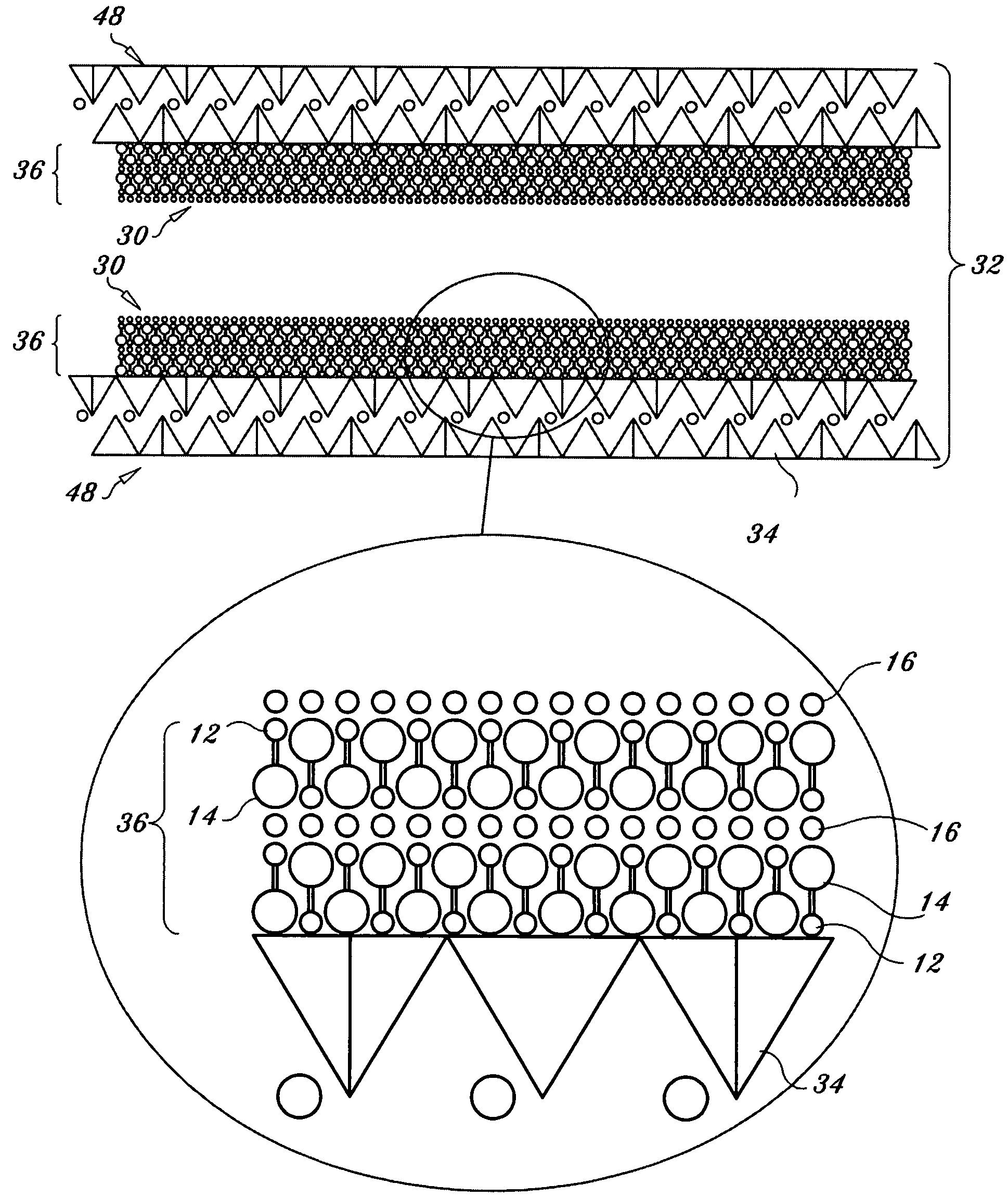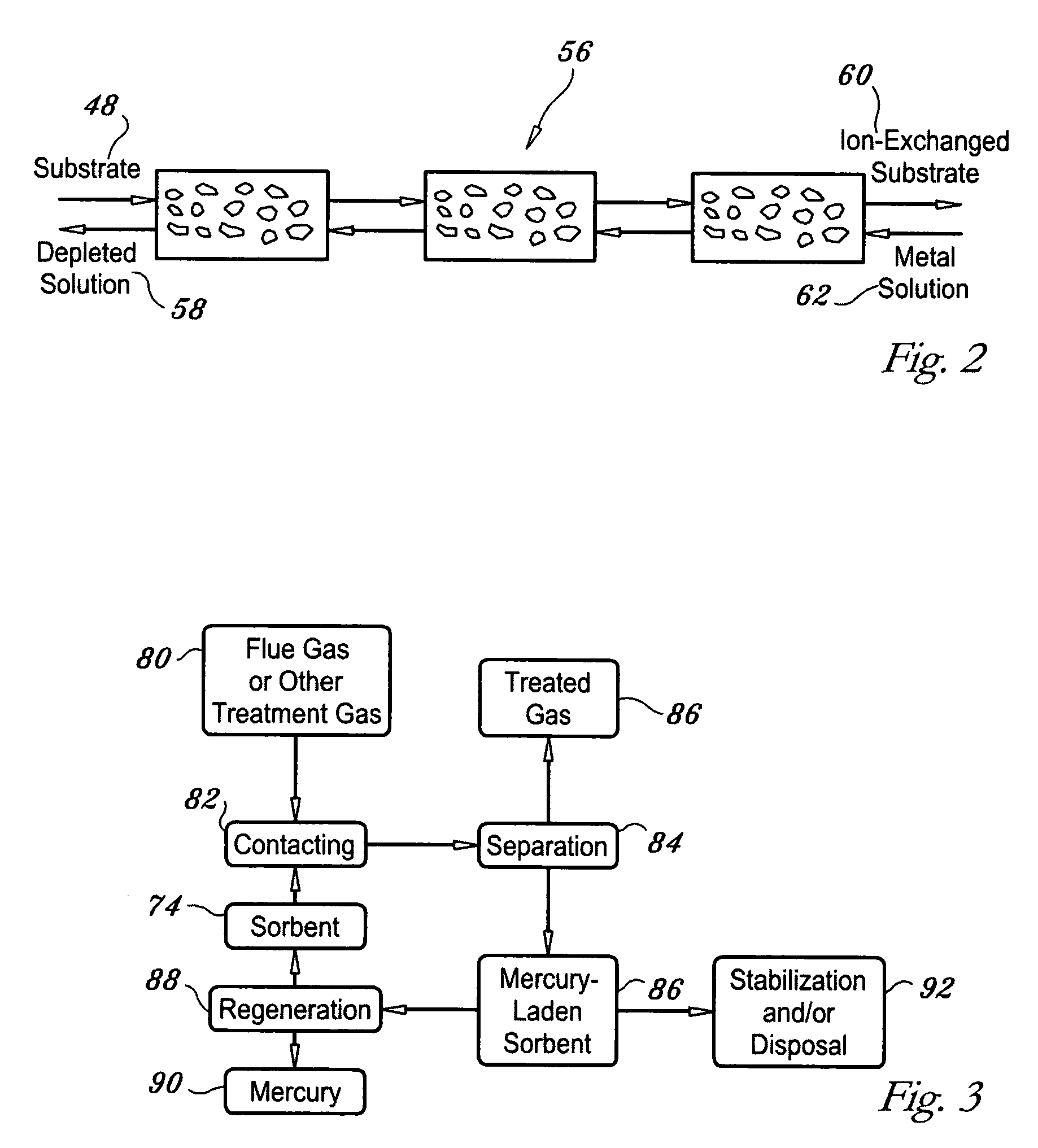Regenerable high capacity sorbent for removal of mercury from flue gas
a high-capacity, sorbent technology, applied in the direction of physical/chemical process catalysts, other chemical processes, separation processes, etc., can solve the problems of increasing mercury levels in fish, no efficient control method, and less appealing solution of activated carbon in coal-fired flue gas streams, so as to reduce the cost of mercury control, reduce the amount of sorbent injected, and reduce the effect of sorbent injection equipmen
- Summary
- Abstract
- Description
- Claims
- Application Information
AI Technical Summary
Benefits of technology
Problems solved by technology
Method used
Image
Examples
working example
[0144]Spray drying was used to separate the finished sorbent material from the water slurry in a number of spray dryer tests. Spray dryer tests were performed with 10 percent and 20 percent slurries. The sorbent derived from the 20 percent slurry had higher mercury capacity compared to sorbent from the 10 percent slurry. The air inlet temperature to the spray dryer was 400° C. The outlet air temperature was maintained just above 100° C. (101-105° C.) to prevent condensation of moisture. The slurry feed rate was adjusted to attain the desired outlet air temperature. Dried sorbent was separated from the gas stream using a cyclone followed by a baghouse.
PUM
| Property | Measurement | Unit |
|---|---|---|
| concentrations | aaaaa | aaaaa |
| temperatures | aaaaa | aaaaa |
| cation exchange capacities | aaaaa | aaaaa |
Abstract
Description
Claims
Application Information
 Login to View More
Login to View More - R&D
- Intellectual Property
- Life Sciences
- Materials
- Tech Scout
- Unparalleled Data Quality
- Higher Quality Content
- 60% Fewer Hallucinations
Browse by: Latest US Patents, China's latest patents, Technical Efficacy Thesaurus, Application Domain, Technology Topic, Popular Technical Reports.
© 2025 PatSnap. All rights reserved.Legal|Privacy policy|Modern Slavery Act Transparency Statement|Sitemap|About US| Contact US: help@patsnap.com



